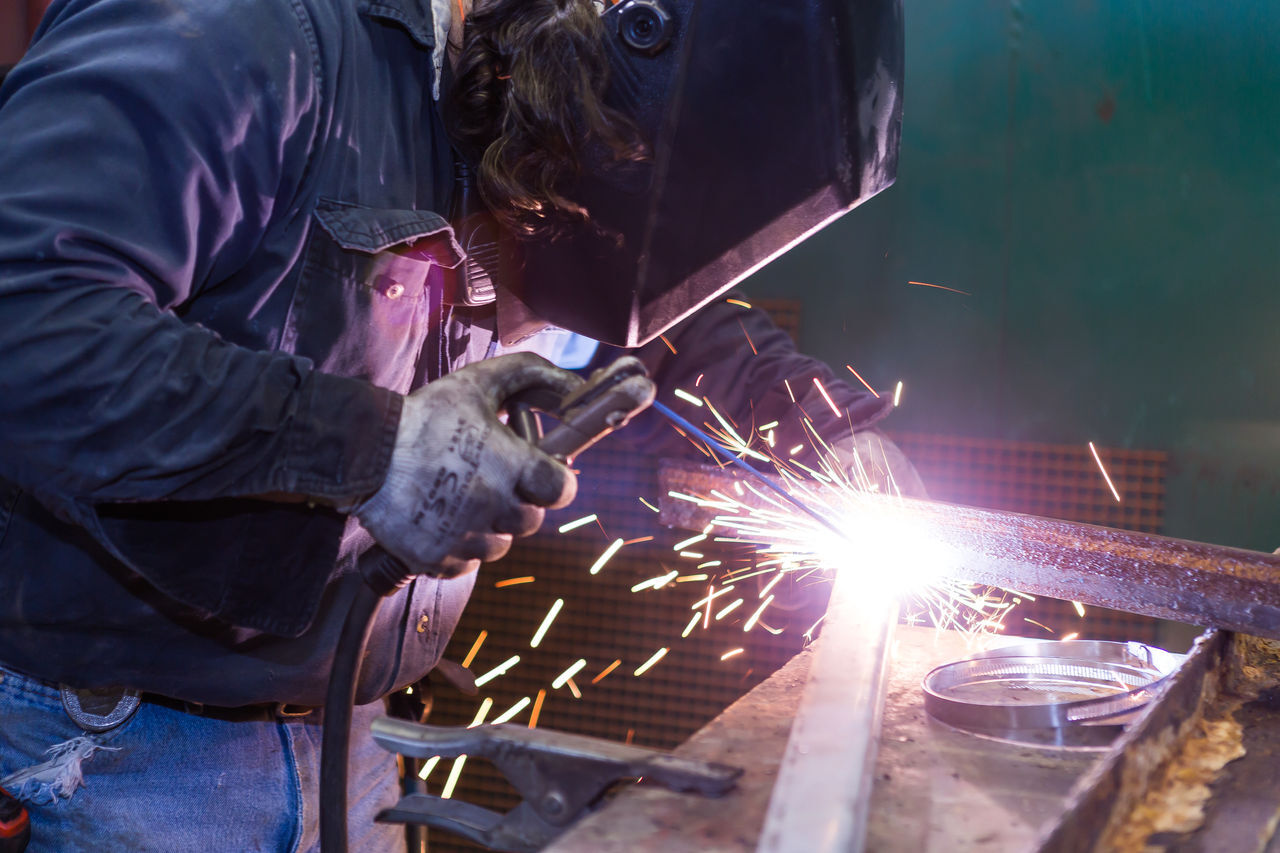Welding safety for roofers should always be a top priority when welding is required on a roofing job. Adhering to welding safety guidelines every step of the way helps reduce the risk of fires, crew injuries, and potential building damage. Proper preparation, education, training, and access to the appropriate tools and gear are all key to helping you prioritize personal safety and project success. Here's what you should know about welding safety for roofers, from risk assessment to emergency response.
Risk Assessment and Precautions
Welding safety for roofers begins before the project starts. When you know a jobsite will require welding, perform a risk assessment of the location, identifying potential hazards and developing a plan to mitigate risks. Onsite, this means thoughtfully positioning welding equipment, power lines, and other tools, operating them with the highest level of safety in mind, and storing them securely when not in use.
Beyond protecting the crew member who's performing the welding, it's important to stage the work area to ensure other workers onsite remain safe. Always have safety measures and clear communication protocols in place for individuals near the building or on the ground, such as warning signs and designated barriers.
Welding Safety Training
Proper training is critical for welding safety. When you're educated about safety procedures and potential risks and hazards, you're better equipped to achieve quality welds in the safest manner possible. Every member of your team should take the American Welding Society's free online safety training course. You can also download ANSI Z49,1:2021, an American National Standard for Safety in Welding, Cutting, and Allied Processes, which details all welding health and safety guidelines.
A key to welding safety for roofers is wearing personal protective equipment. Clothing, helmets, and gloves need to be noncombustible, flame-resistant, and self-extinguishing, and goggles must be properly shaded to protect your eyes.
Fire Safety Measures
Take careful fire prevention measures on every jobsite where welding takes place. Clear the area of potentially flammable debris, and move any combustible materials well out of range whenever possible. Protect anything that can't be relocated with a fire-resistant shield. Remember to consider the roof's surface as well. If it's not fire-resistant, you may need to cover it with damp sand or sheet metal. Be sure to note any cracks or gaps where sparks may land, and cover or otherwise close them off.
It's also important to have fire extinguishing equipment nearby and easily accessible. This can include fire extinguishers, buckets of water or sand, a fire blanket, or a hose attached to a water spigot. Prepare all roofers by outlining a fire safety plan, so they'll be ready to respond in case of an emergency.
Ventilation and Air Quality
Welding fills the air with sparks and smoke, so ensure the jobsite is adequately ventilated to protect yourself and your crew from exposure to harmful levels of toxins. The ANSI Z49,1:2021 American National Standard discusses the various factors to take into consideration when determining adequate ventilation measures, including workspace configuration, natural air flow rate, and the type of work being performed.
In situations where you're unable to achieve ideal ventilation conditions, you may need to take alternative measures, such as using an exhaust ventilation system or equipping workers onsite with approved protective respiratory equipment. The worker performing the welding should always take care to avoid breathing in any fumes directly.
Electrical Safety
Another key factor in welding safety for roofers is electrical shock risk. Note where electric conduits, lines, and components are located-not only on the roof, but also overhead. Check your own power cords and lines to make sure they're in good condition and don't have exposed wires or other signs of wear.
Additionally, ensure your welding equipment is properly grounded with a solid metal-on-metal contact. Some smaller welding machines may contain a grounding conductor, so always follow the manufacturer's instructions for safe use.
Emergency Response and First Aid
Being prepared in the event of an emergency or accident is critical to the situation's outcome. Always have a first aid kit available onsite, and prepare a written response plan for each job location. When you have a plan, workers will know how to respond, who to call, and what to do in the event of an emergency.
Share the plan with everyone who will be on the jobsite ahead of time, and ensure they're all trained in first aid, so they can attend to minor scrapes and injuries until professional help arrives.
Prioritizing Welding Safety for Roofers
Welding safety for roofers is crucial to personal safety and project success. By properly training workers about welding safety risks and protocols, preparing job sites, following manufacturer's instructions, and ensuring easy access to fire extinguishing equipment and other emergency resources, you can rest assured your team is protected. With these measures in place, you can complete roof welding effectively and safely on any building.

